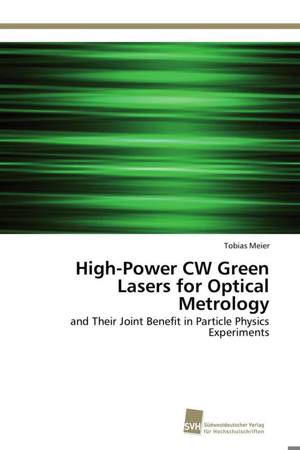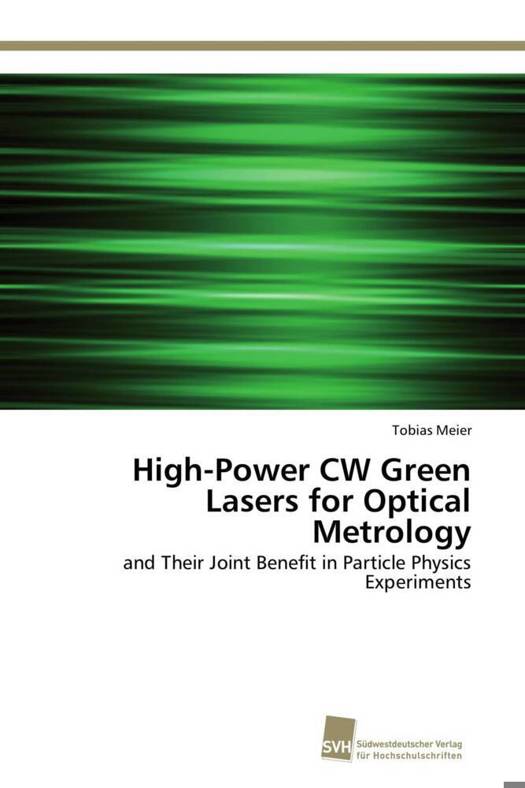
- Afhalen na 1 uur in een winkel met voorraad
- Gratis thuislevering in België vanaf € 30
- Ruim aanbod met 7 miljoen producten
- Afhalen na 1 uur in een winkel met voorraad
- Gratis thuislevering in België vanaf € 30
- Ruim aanbod met 7 miljoen producten
Zoeken
High-Power CW Green Lasers for Optical Metrology
and Their Joint Benefit in Particle Physics Experiments
Tobias Meier
Paperback | Engels
€ 99,45
+ 198 punten
Omschrijving
Compared to infrared lasers, high-power continuous-wave single-frequency (HPCWSF) laser sources emitting green light are beneficial in various engineering and physics applications. But in the past their output powers were limited to about 20 W. Light shining through a wall (LSW) experiments utilized pulsed lasers in the past. Their sensitivity was limited by the available average output powers of those systems with suitable beam quality and pulse length. These remained below 10 W. In this thesis a 532 nm HPCWSF laser source with an unprecedented long-term stable output power of 134 W was realized by external-cavity doubling with 90 % external conversion efficiency. With common and novel measurement techniques a fraction of at least 97 % of the harmonic power was found to be contained in the fundamental transversal mode. Additionally, in this thesis an existing large-scale LSW experiment was improved to become the most sensitive reported so far. Its pulsed laser was substituted by the combination of a 532 nm HPCWSF laser source and a 9 m long production resonator. Finally, a basic design study of an enormously improved future LSW experiment with regeneration cavity was made here.
Specificaties
Betrokkenen
- Auteur(s):
- Uitgeverij:
Inhoud
- Aantal bladzijden:
- 252
- Taal:
- Engels
Eigenschappen
- Productcode (EAN):
- 9783838114347
- Verschijningsdatum:
- 20/12/2011
- Uitvoering:
- Paperback
- Afmetingen:
- 150 mm x 15 mm
- Gewicht:
- 352 g

Alleen bij Standaard Boekhandel
+ 198 punten op je klantenkaart van Standaard Boekhandel
Beoordelingen
We publiceren alleen reviews die voldoen aan de voorwaarden voor reviews. Bekijk onze voorwaarden voor reviews.








